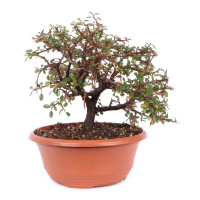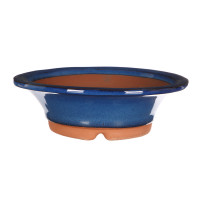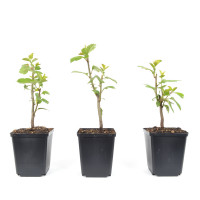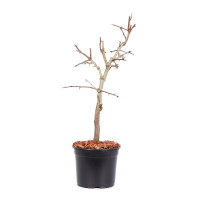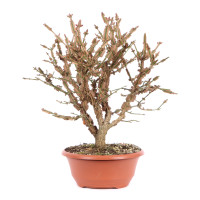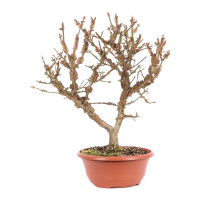Cotoneaster microphyllus ‘Cochleatus‘ - Dwarf Creeping Cotoneaster ‘Cochleatus‘
Dwarf Creeping Cotoneaster ‘Cochleatus‘
- Order number: 1755-P-24-3945
- Height: 20 cm (incl. pot)
- Foliage: evergreen
- Bonsai Pot: plastic pot
- Year: 2020
- Characteristics: with flowers, with fruits
- Origin: Germany
Cotoneaster microphyllus ‘Cochleatus‘ - Dwarf Creeping Cotoneaster ‘Cochleatus‘
General:
The dwarf creeping cotoneaster is common in China, India, Myanmar and Nepal. It grows there as a very dense, creeping and evergreen dwarf shrub. The plant belongs to the rose family with the corresponding flowers and fruits in miniature form.
Care as a bonsai:
The dwarf creeping cotoneaster is made for bonsai design. Its leaves, flowers and fruits are small, absolutely compatible with pruning and will sprout again and again. It blooms from May to June with small white flowers and then gets red berries from September. These stick to the plant even in winter. It is suitable for all forms of design, especially since they can be wired and cut all year round. It can be kept very small for many years. The dwarf creeping cotoneaster is also suitable as underplanting for forests or landscapes (Saikei). When wiring, care should be taken that the small leaves are not wired in. This is of course not that easy with the large number of leaves. The cotoneaster does not make any special demands on its location, but extremes should still be avoided. The lighter the location, the more pronounced the bloom and fruit formation.
Special features of the variety dwarf creeping cotoneaster ‘Cochleatus‘:
The dwarf creeping cotoneaster ‘Cochleatus‘ has remarkably small leaves (0.5-1.3 cm long), and grows rather flat and curved downwards. Overall, it doesn't grow as fast as other species.






